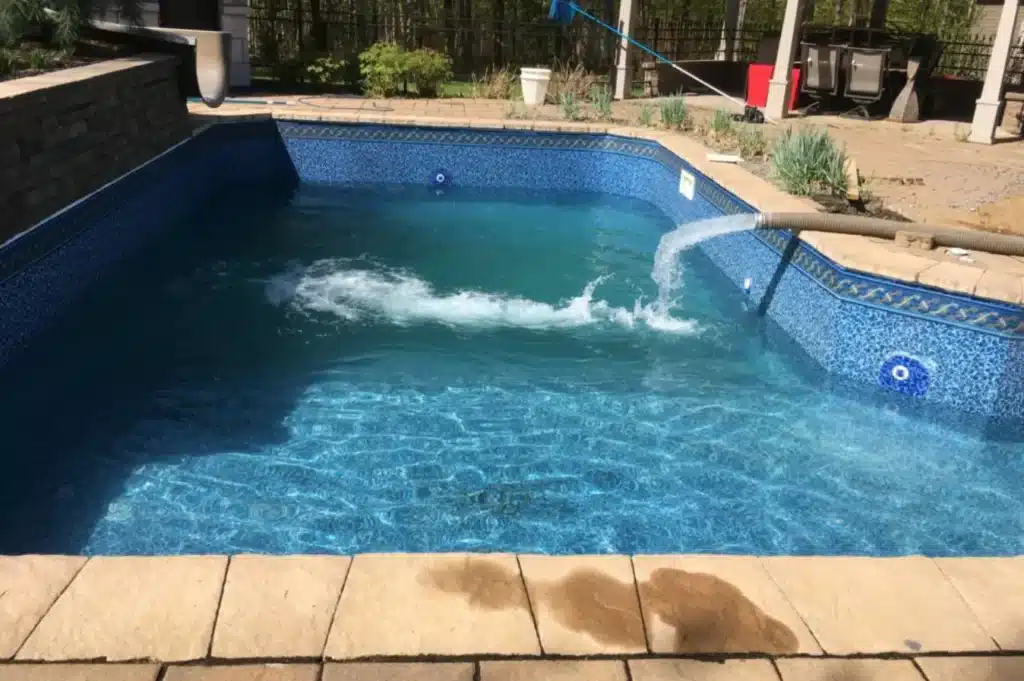At present, water consumption is becoming a global issue, and you are wondering how to optimize your pool's consumption. On average, a 8 x 4 m pool consumes 15 m3 of water, i.e. 15,000 liters. Here are some tips that will allow you to reduce your consumption and save money.

Water renewal occurs primarily during the starting up your pool(summering):
Apart from this period, you will only need to make occasional water leveling to compensate for evaporation due to high temperatures.
The water consumption of your pool depends mainly on three parameters:
Over the past twenty years, pool professionals have made significant innovations in the choice of construction materials, in filtration pumps, which are now much more efficient than in the past, and in high-performance protection systems that preserve water quality. These investments will allow you to save water and often also to consume less electricity.
Did you know ? The ideal daily filtration time for a pool is calculated as follows: water temperature in C° divided by 2. This gives you the result in hours
The Federation of Pool and Spa Professionals recommends a weekly 30-minute check to clean your pool and filter to avoid excessive cleaning.
A swimming pool can only be drained when the pool is being worked on or when the pool walls are too scaled, the water is saturated with chlorine stabilizer or is too degraded. For this reason, it is necessary to take a few minutes of special care every week. This will reduce your water bill and your impact on the planet.
The last reason you lose large volumes of water is the most obvious: a leak. If you suspect a leak, we recommend that you examine your pool's structure and lining, pipes and filtration system. If in doubt, call a pool professional to give you his or her opinion.
It is possible to reason about your pool's water consumption as long as you have the right equipment. In addition, connected water analyzers such asICO allow you to monitor your pool water and to treat it efficiently at the right time, before its quality deteriorates. This way you can effectively preserve the quality of your water without having to renew it.
Very recently, a new European energy performance standard was launched: as a consumer, you can build your pool or renovate it by choosing materials based on their energy performance. You can now make your purchases in a well-informed way.
If you also own a hot tub, you can find our tips for reducing your electricity consumption.
| Cookie | Duration | Description |
|---|---|---|
| cookielawinfo-checkbox-analytics | 11 months | This cookie is set by GDPR Cookie Consent plugin. The cookie is used to store the user consent for the cookies in the category "Analytics". |
| cookielawinfo-checkbox-functional | 11 months | The cookie is set by GDPR cookie consent to record the user consent for the cookies in the category "Functional". |
| cookielawinfo-checkbox-necessary | 11 months | This cookie is set by GDPR Cookie Consent plugin. The cookies is used to store the user consent for the cookies in the category "Necessary". |
| cookielawinfo-checkbox-others | 11 months | This cookie is set by GDPR Cookie Consent plugin. The cookie is used to store the user consent for the cookies in the category "Other. |
| cookielawinfo-checkbox-performance | 11 months | This cookie is set by GDPR Cookie Consent plugin. The cookie is used to store the user consent for the cookies in the category "Performance". |
| viewed_cookie_policy | 11 months | The cookie is set by the GDPR Cookie Consent plugin and is used to store whether or not user has consented to the use of cookies. It does not store any personal data. |